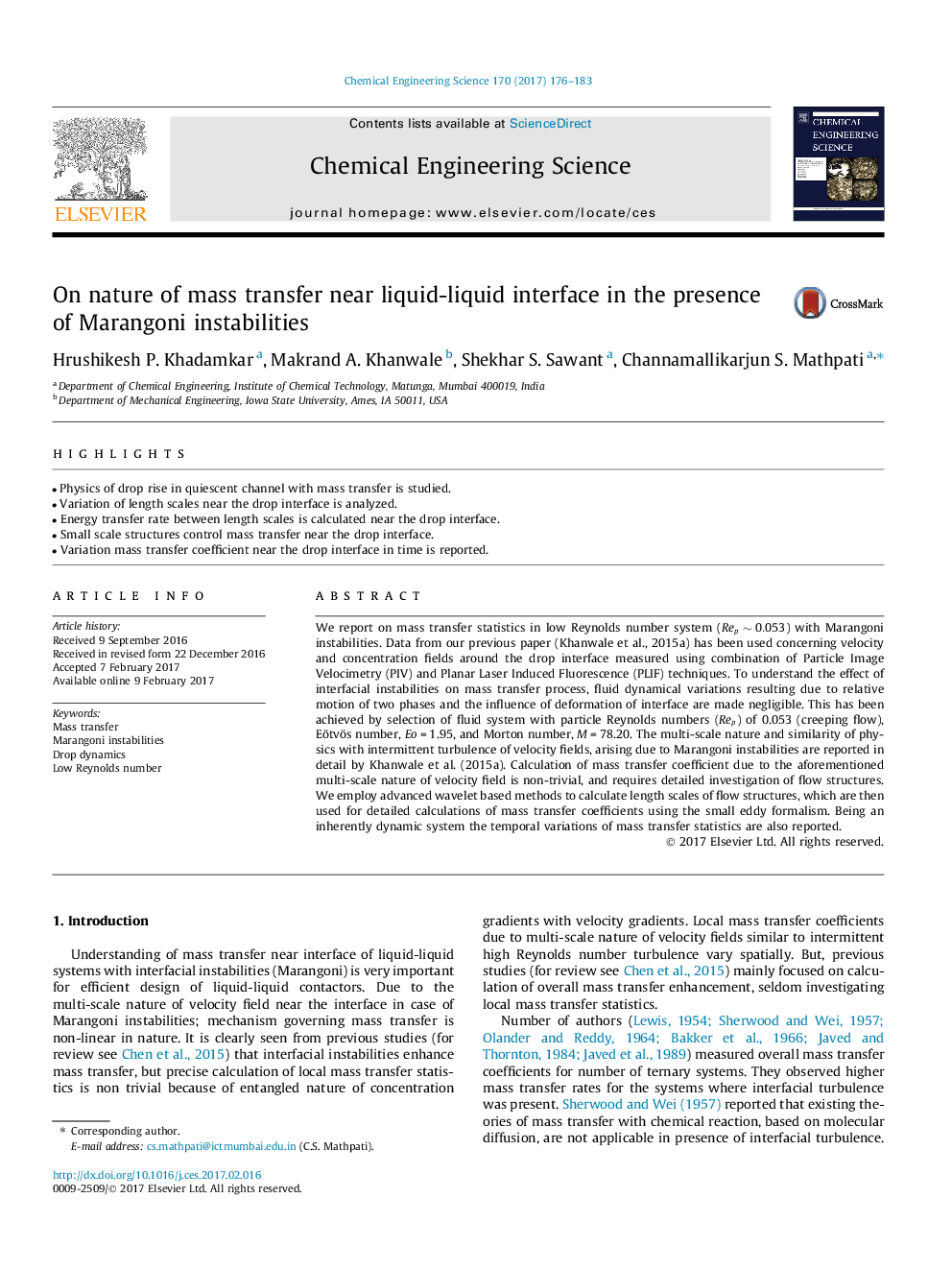| Article ID | Journal | Published Year | Pages | File Type |
|---|---|---|---|---|
| 6467215 | Chemical Engineering Science | 2017 | 8 Pages |
â¢Physics of drop rise in quiescent channel with mass transfer is studied.â¢Variation of length scales near the drop interface is analyzed.â¢Energy transfer rate between length scales is calculated near the drop interface.â¢Small scale structures control mass transfer near the drop interface.â¢Variation mass transfer coefficient near the drop interface in time is reported.
We report on mass transfer statistics in low Reynolds number system (Repâ¼0.053) with Marangoni instabilities. Data from our previous paper (Khanwale et al., 2015a) has been used concerning velocity and concentration fields around the drop interface measured using combination of Particle Image Velocimetry (PIV) and Planar Laser Induced Fluorescence (PLIF) techniques. To understand the effect of interfacial instabilities on mass transfer process, fluid dynamical variations resulting due to relative motion of two phases and the influence of deformation of interface are made negligible. This has been achieved by selection of fluid system with particle Reynolds numbers (Rep) of 0.053 (creeping flow), Eötvös number, Eo = 1.95, and Morton number, M = 78.20. The multi-scale nature and similarity of physics with intermittent turbulence of velocity fields, arising due to Marangoni instabilities are reported in detail by Khanwale et al. (2015a). Calculation of mass transfer coefficient due to the aforementioned multi-scale nature of velocity field is non-trivial, and requires detailed investigation of flow structures. We employ advanced wavelet based methods to calculate length scales of flow structures, which are then used for detailed calculations of mass transfer coefficients using the small eddy formalism. Being an inherently dynamic system the temporal variations of mass transfer statistics are also reported.
